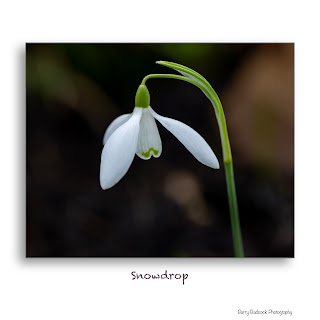Just playing with a vase of tulips on our kitchen table.
Sunday, 2 February 2020
Saturday, 1 February 2020
In Camera Pep Ventosa
People who look at my blog or my instagram feed will be aware that I am currently hooked on In-camera Multiple Exposures. In the past I have created 'so-called' Pep Ventosa Images by combining multiple images in Photoshop. While we were at Anglesea Abbey today I tried something I have been thinking about, and that is using the 'In Camera' Multiple Exposure Function of my Canon EOS R. To create a Pep Ventosa Image. Pep Ventosa images involve you taking a photo then moving slightly and then taking another photo and then repeating, either by walking round the object or in a straight line.
Generally the final image is made up of over 25 images. Combination of the files in Photoshop and working on each layer with obacity and blending mode.
The Canon EOS R has four blending modes and I took 5 pictures of the front of Anglesea Abbey using three of the modes. (Average, Dark and Bright)
The Four Camera Modes are:-
1. Additive which I seldom use. You have to work out in advance the exposure compensation you need. This pre-supposes you know where the photograph is going :)
2. Average, where the camera works out the exposure according to the number of shots you are combining. In fact most Canon DSLR's have these blending modes built in.
3. Dark and
4. Bright
With these two modes the Dark (or Bright) of the start image and the subsequent images that are added are compared at the same point on the sensor and the the Dark Bit (Bright Bit) will be left in the picture. In addition to this the colours that are overlapping may be mixed depending upon the darkness ration (brightness ratio) of the added images.
'Clear as Mud' :)
Ignoring the picture above this is only there for Facebook to look okay.
The 1st Image below is AverageMode, The 2nd Dark Mode and the 3rd Bright mode. These combination images where imported into Adobe Lightroom and 'Basic Adjustments made.
I have the camera set to save all images, not just the resulting Multiple Exposure and using these images I created a normal Pep Ventosa Image in Photoshop, adjusting each layer and opacity. 4th Image below
For this exercises all image layers where left at Normal Blend Mode. If you are interested the final image (Image 8) on this blog is a clip of the photoshop Layers panel.
Images 5, 6 and 7 are the same images in monochrome.
A final word about the camera I used.
The Canon EOS R is a full frame Mirrorless Camera. The advantage of using any mirrorless camera with this technique is that you can 'see' how your photos align up in the viewfinder.
With my DSLR, the Canon 5Dmkiv, I have to use Live view on the rear screen. Although this is possible I do find looking through the viewfinder a big advantage creatively and particularly in sunlight where the rear screen on a DSLR cannot always bee seen.
 |
| Image 1 - Additive Blend Mode in Camera |
 |
| Image 2 - Dark Blend Mode in Camera |
 |
| Image3 - Bright Blend Mode in Camera |
 |
| Image 4 Created in Photoshop |
 |
| Image 5 - Additive Blend Mode in Camera - Mono Version |
 |
| Image 6 - Dark Blend Mode in Camera - Mono Version |
 |
| Image 7 - Bright Blend Mode in Camera - Mono Version |
Subscribe to:
Posts (Atom)
Cambridge University Botanic Garden with the Camera Club
Saturday 17th Feb 24 - Sue and I met up with other members of the Cambridge Camera Club at the Cambridge University Botanic Garden .

-
Saturday 17th Feb 24 - Sue and I met up with other members of the Cambridge Camera Club at the Cambridge University Botanic Garden .
-
I have been playing with a Photoshop technique called 'Twirl'. Great fun .... All these photos originated from images I took in ...
-
We met up with the Guernsey Camera Clubs at a Quarry operated by Ronez. In 2015 the company created a short 50 minute nature walk around the...









